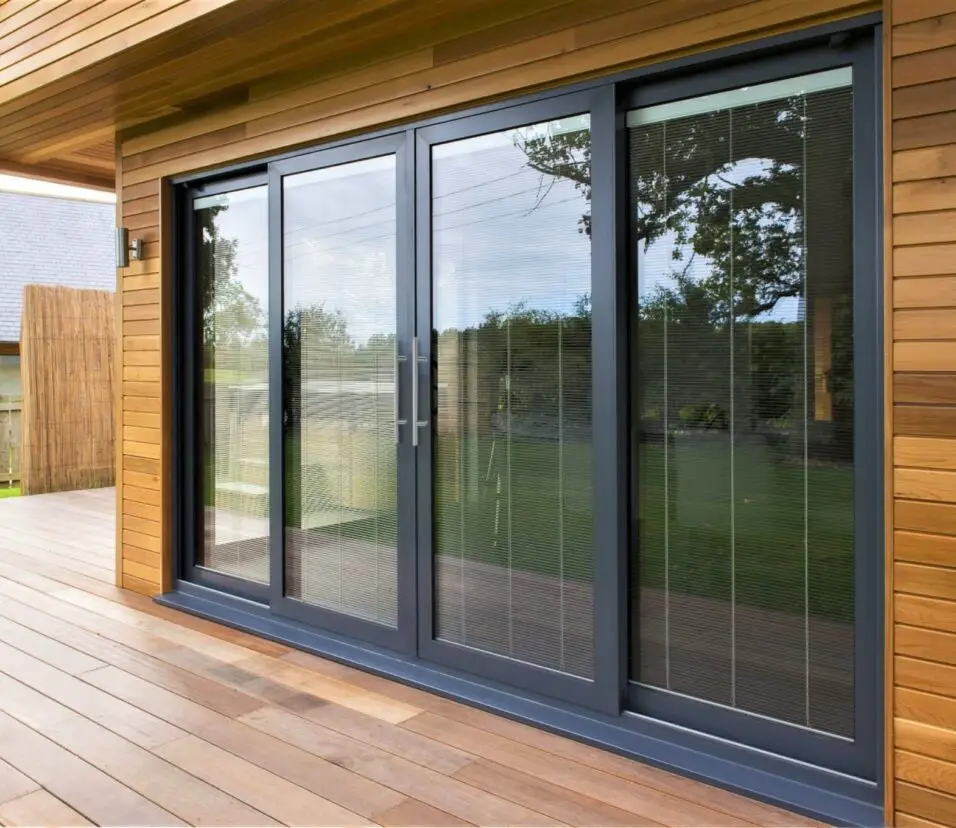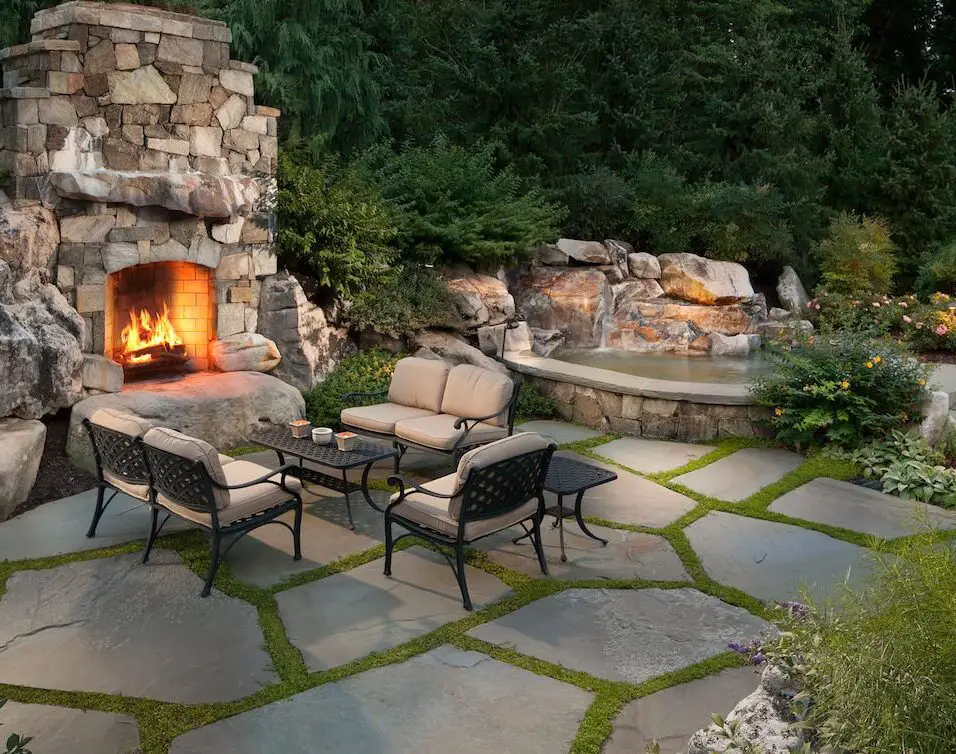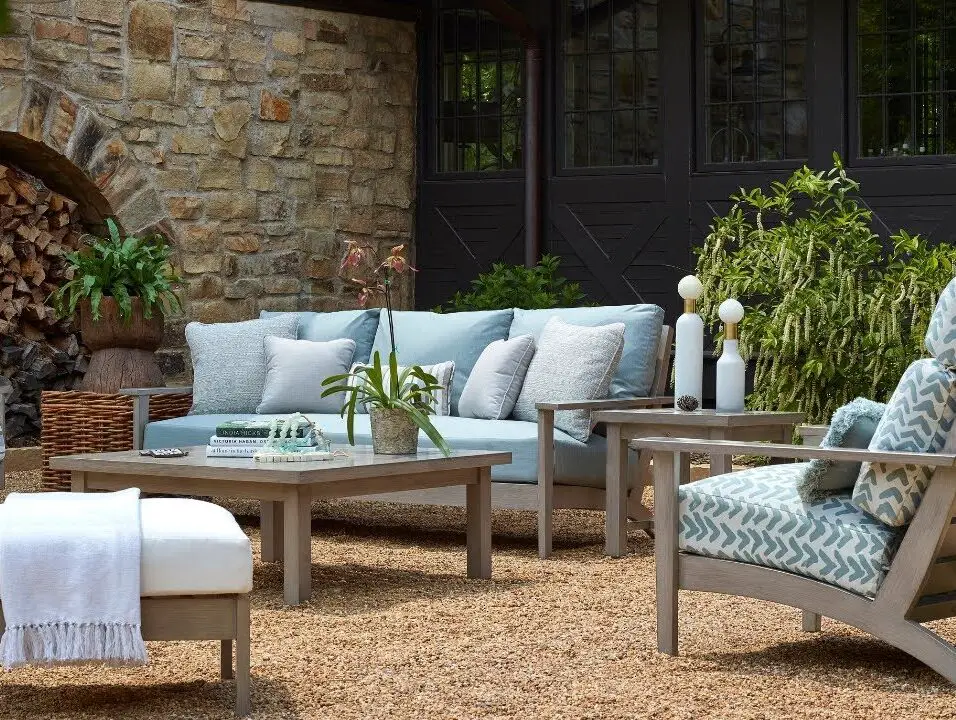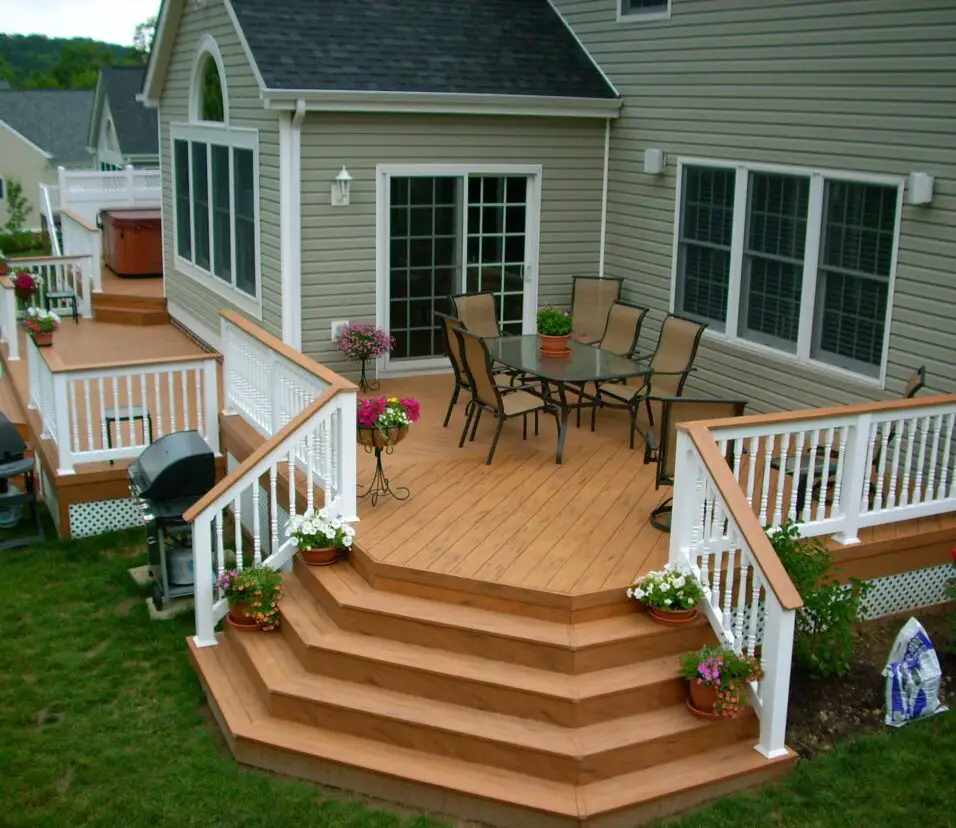How To Enclose A Patio Temporarily
Introduction
How To Enclose A Patio Temporarily: Perhaps you want to create a cozy space during the colder months or protect yourself from bugs during the summer. Whatever the reason, enclosing your patio temporarily can be a great solution. In this article, we will explore different methods and techniques to help you enclose your patio and make it a versatile space that can be used throughout the year.
Enclosing your patio temporarily offers several benefits. Firstly, it allows you to extend the use of your outdoor space, making it usable even in unfavorable weather conditions. Whether it’s raining, snowing, or windy, you can still enjoy your patio without being exposed to the elements. Additionally, enclosing your patio cushions can provide you with privacy, creating a secluded area where you can relax and unwind. It can also help to keep bugs and insects at bay, allowing you to enjoy the outdoors without the annoyance of buzzing mosquitoes or pesky flies.
There are various methods you can use to enclose your patio temporarily. One option is to install removable screens or curtains. These can be easily attached to the existing structure of your patio and can be taken down when not needed. Another option is to use clear vinyl panels or plastic sheeting. These can be hung from the roof or attached to the sides of your patio, providing a barrier against wind and rain while still allowing you to enjoy the view. Additionally, you can consider using portable room dividers or folding screens to create a temporary enclosure. These can be moved and adjusted as needed, giving you flexibility in how you use your patio space.

How do I temporarily enclose my patio for winter?
4 Brilliant Ways to Enclose Your Patio for the Winter Season
- Clear vinyl siding.
- Insulated curtains.
- Shade screens.
- Pre-made patio enclosures.
Winter can be a harsh season, especially for outdoor spaces like patios. If you’re looking to protect your patio from the cold weather and elements, temporarily enclosing it can be a great solution. By creating a barrier around your patio, you can create a cozy and comfortable space that can be enjoyed even during the winter months. There are several options available for temporarily enclosing your patio, depending on your budget and preferences.
One option is to use outdoor curtains or blinds to enclose your patio. These can be hung from a rod or track system and can be easily opened or closed as needed. Outdoor curtains are typically made from weather-resistant materials that can withstand the elements. They can provide privacy and protection from wind and cold air, while still allowing you to enjoy the view outside. Outdoor blinds, on the other hand, are made from durable materials like PVC or bamboo and can be rolled up or down to control the amount of light and air that enters your patio.
Another option is to use temporary walls or panels to enclose your patio. These can be made from materials like wood, metal, or plastic and can be easily installed and removed as needed. Temporary walls can provide a more solid barrier against the elements and can help to insulate your patio, keeping it warmer during the winter months. They can also provide additional privacy and can be decorated or painted to match the style of your patio.
What is the cheapest way to enclose a patio for winter?
Screened-in
This is the most plain-vanilla, relatively quick and inexpensive approach to enclosing your porch: just adding screens to the sides. Screening in your porch will protect the area from critters and bugs, and keep the rain out.
When winter arrives, many homeowners want to find a way to enclose their patio to create a cozy and warm space. However, the cost of enclosing a patio can often be a deterrent. Fortunately, there are several affordable options available that can help you enclose your patio without breaking the bank.
One of the cheapest ways to enclose a patio for winter is by using plastic sheeting or tarps. These materials are inexpensive and can be easily attached to the existing structure of your patio. Simply measure the dimensions of your patio and purchase enough plastic sheeting or tarps to cover the entire area. Attach the sheeting or tarps to the structure using nails or staples, making sure to secure them tightly to prevent any drafts or cold air from entering the enclosed space.
Another affordable option for enclosing a patio is by using outdoor curtains or blinds. These can be purchased at a relatively low cost and are available in a variety of styles and colors to suit your personal taste. Outdoor curtains or blinds can be easily installed using curtain rods or hooks, allowing you to open and close them as needed. They provide a barrier against the cold air while still allowing natural light to enter the enclosed space.
Is it a good idea to enclose a patio?
Enclosing an existing patio, porch or deck gives you additional space you can use all year. Customized options with screens or windows can bring your design visions to life and provide the perfect space you, your family and your guests can enjoy.
Enclosing a patio can be a great idea for many homeowners. It offers several benefits and can enhance the overall functionality and enjoyment of the outdoor space. However, whether or not it is a good idea ultimately depends on individual preferences, needs, and budget.
One of the main advantages of enclosing a patio is that it provides protection from the elements. By enclosing the patio, homeowners can enjoy the space year-round, regardless of the weather conditions. This means that even during rainy or cold seasons, the patio can still be used for various activities such as dining, entertaining guests, or simply relaxing outdoors. Enclosing the patio also helps to keep out pests and insects, creating a more comfortable and enjoyable environment.
Enclosing a patio can also increase the privacy of the outdoor space. By adding walls or screens, homeowners can create a secluded area where they can relax and unwind without being disturbed by neighbors or passersby. This is especially beneficial for those who live in densely populated areas or have limited backyard space. The added privacy can make the patio feel like an extension of the indoor living space, providing a peaceful retreat.
What material is used for patio enclosures?
Aluminum, vinyl, glass, wood, and acrylic are the most often used materials for patio enclosures.
When it comes to patio enclosures, the choice of material is crucial in determining the overall look, durability, and functionality of the structure. There are several materials commonly used for patio enclosures, each with its own unique characteristics and benefits. By understanding the different options available, homeowners can make an informed decision that best suits their needs and preferences.
One popular material used for patio enclosures is glass. Glass enclosures offer a sleek and modern look, allowing for unobstructed views of the surrounding outdoor space. They also provide excellent insulation, helping to keep the enclosure comfortable year-round. Additionally, glass enclosures are highly durable and resistant to weather elements, making them a long-lasting option for homeowners.
Another commonly used material for patio enclosures is aluminum. Aluminum enclosures are known for their strength and durability, making them a popular choice for homeowners seeking a sturdy and low-maintenance option. Aluminum enclosures can be customized to fit any size or shape of patio, and they are available in a variety of colors and finishes to complement the existing aesthetic of the home.
Wood is also a popular material for patio enclosures. Wood enclosures offer a natural and rustic look, adding warmth and charm to any outdoor space. They can be constructed using various types of wood, such as cedar or redwood, which are naturally resistant to decay and insect damage. Wood enclosures can be stained or painted to match the homeowner’s desired color scheme, providing endless design possibilities.
What is the best way to enclose a patio?
First, let’s look at some common ways to enclose a patio:
- Fully enclosed and insulated.
- Enclose with glass walls.
- Retractable Screens.
- Outdoor blinds.
- Wooden privacy walls.
- PVC weather screens.
- Sail shade.
The finest patio enclosure depends on privacy, weather protection, and aesthetics. We’ll review the pros and cons of the most popular patio enclosure methods in this article.
Patios are often enclosed with screens or mesh panels. This solution balances privacy and visibility, letting you enjoy the outside while keeping pests away. Screens are composed of aluminum, fiberglass, or vinyl and can be permanent or removable. Many people choose screens because they are inexpensive and easy to install.
Glass panels or windows are another common patio enclosure. This method is permanent and waterproof, so you may enjoy your patio year-round. Glass enclosures can be made to fit your patio and have sliding or folding doors for convenient access. Glass panels offer great visibility and natural light, blending interior and outdoor settings.
How can I create a temporary barrier around my patio?
Creating a temporary barrier around your patio can be a great way to add privacy, protect against the elements, or simply define the space. There are several options available to achieve this, depending on your needs and preferences.
One option is to use outdoor curtains or drapes. These can be hung from a rod or wire system and easily opened or closed as needed. Outdoor curtains come in a variety of materials and colors, allowing you to customize the look of your patio while also providing a barrier from wind, sun, or prying eyes.
Another option is to use portable privacy screens or room dividers. These can be easily moved and positioned around your patio to create a temporary barrier. Privacy screens are available in various styles and materials, such as bamboo, fabric, or metal, and can be folded up and stored when not in use.
Are there any specific materials or products designed for temporary patio enclosures?
Yes, there are materials and items that are made just for making temporary patio enclosures. Curtains or drapes for outside are a common choice. The fabric or vinyl used to make these curtains won’t get damaged by the weather, and they’re easy to hang from a rod or wire around the patio. They give you privacy and can help keep the wind and sun out. You can easily open and close some outdoor curtains because they come with tiebacks or Velcro clips.
You could also use outdoor blinds or shades to make a temporary backyard enclosure. It can put these up on the patio’s sides to make a wall and give it shade. Most outdoor blinds are made of bamboo, wood, or PVC, and they can be rolled up or down to control the amount of light and privacy you want. They are simple to put up and can be a cheap way to quickly close off a patio.
What are some cost-effective ways to enclose a patio temporarily?
When it comes to cost-effective ways to enclose a patio temporarily, there are several options to consider. One option is to use outdoor curtains or drapes. These can be hung from a rod or wire and provide a simple and affordable way to create a barrier around your patio. Outdoor curtains come in a variety of materials and styles, allowing you to choose the option that best suits your needs and budget.
Another cost-effective option is to use bamboo or reed fencing. These natural materials are not only affordable but also provide a rustic and tropical look to your patio enclosure. Bamboo or reed fencing can be easily installed by attaching it to existing structures or using stakes to secure it in place. This type of fencing is durable and can withstand various weather conditions, making it a great choice for temporary patio enclosures.
Are there any considerations or limitations to keep in mind when enclosing a patio temporarily?
When it comes to enclosing a patio temporarily, there are a few important considerations and limitations to keep in mind. First and foremost, it’s crucial to consider the weather conditions in your area. If you live in an area with heavy rain or strong winds, you’ll need to choose a temporary enclosure option that can withstand these elements. Look for options that are made from durable materials such as heavy-duty vinyl or reinforced fabric.
Another consideration is the size and layout of your patio. Some temporary enclosure options may not be suitable for larger or irregularly shaped patios. It’s important to measure your patio accurately and choose an enclosure option that will fit properly. Additionally, if you have any existing structures or features on your patio, such as a pergola or outdoor kitchen, you’ll need to take these into account when selecting an enclosure option.

Conclusion
Enclosing a patio temporarily can be a great way to create an additional living space or protect yourself from the elements. Whether you want to enjoy your patio during the colder months or create a temporary shelter for a special event, there are several options available to enclose your patio.
One of the easiest and most cost-effective ways to enclose a patio enclose temporarily is by using outdoor curtains or shades. These can be hung from a rod or attached to the patio structure, providing a barrier against wind, rain, and sun. Outdoor curtains are available in a variety of materials and colors, allowing you to customize the look of your patio enclosure.
If you’re looking for a more durable option, consider using clear vinyl panels. These panels can be attached to the patio structure using Velcro or other fasteners, creating a transparent barrier that still allows you to enjoy the view. Clear vinyl panels are weather-resistant and can be easily removed when no longer needed.
Another option for temporary patio enclosure is using portable screen walls. These walls are made of lightweight materials and can be easily assembled and disassembled as needed. Portable screen walls provide protection against insects and can be used to create a private and comfortable space.
If you’re looking for a more permanent solution, consider installing a temporary patio enclosure kit. These kits typically include all the materials and instructions needed to enclose your patio, including walls, windows, and doors. Temporary patio enclosure kits are available in a variety of styles and sizes, allowing you to choose the option that best fits your needs.








